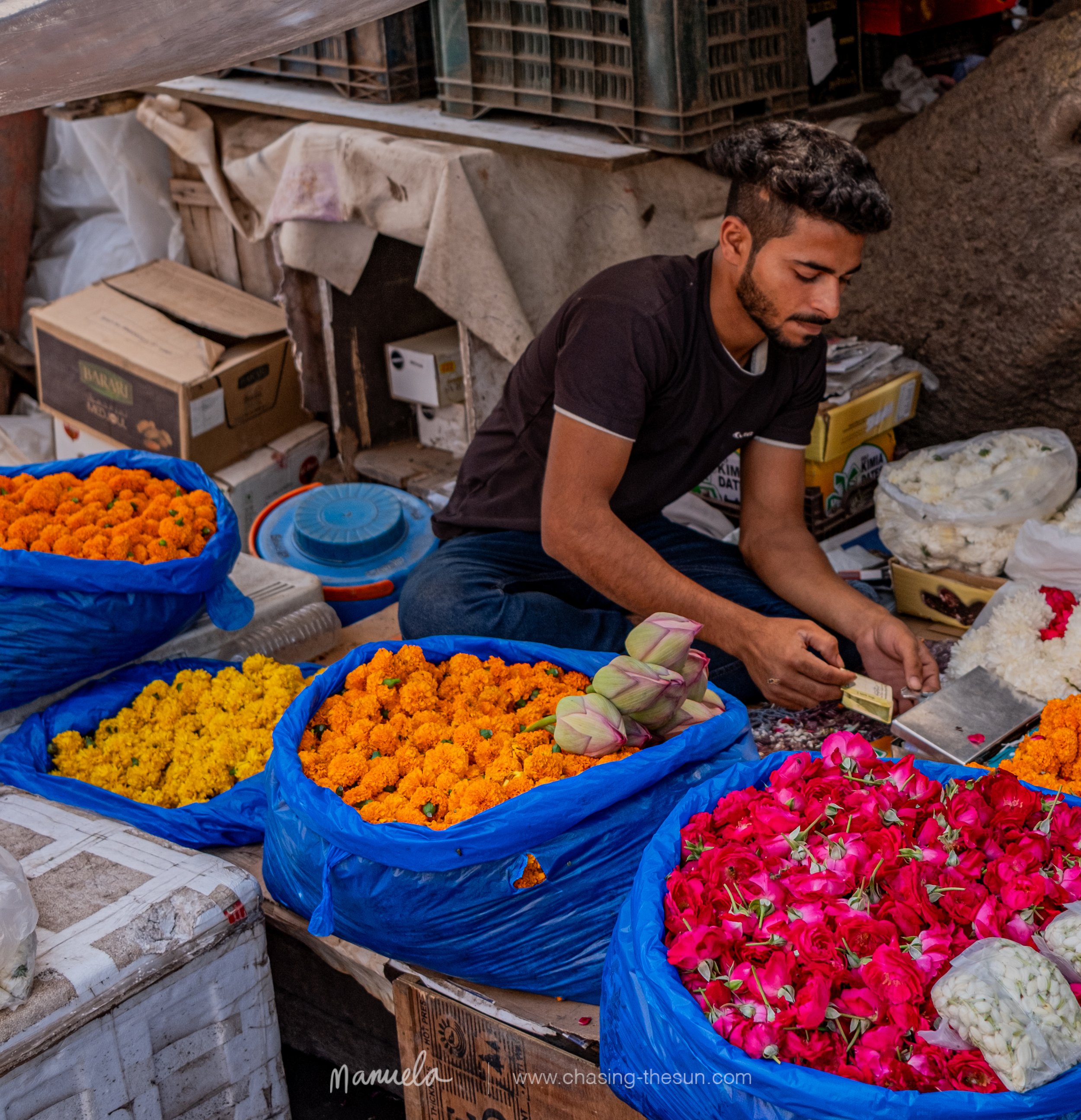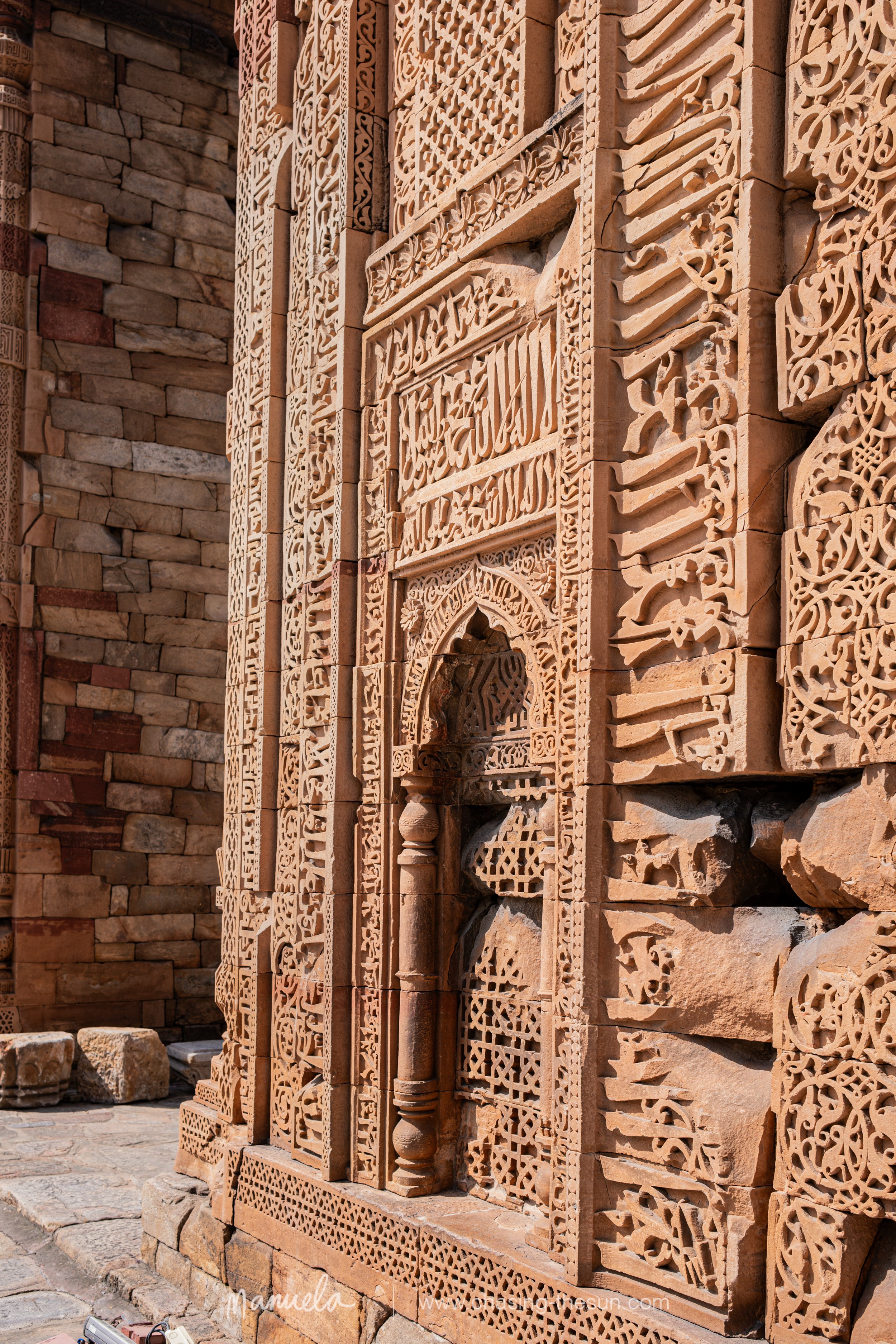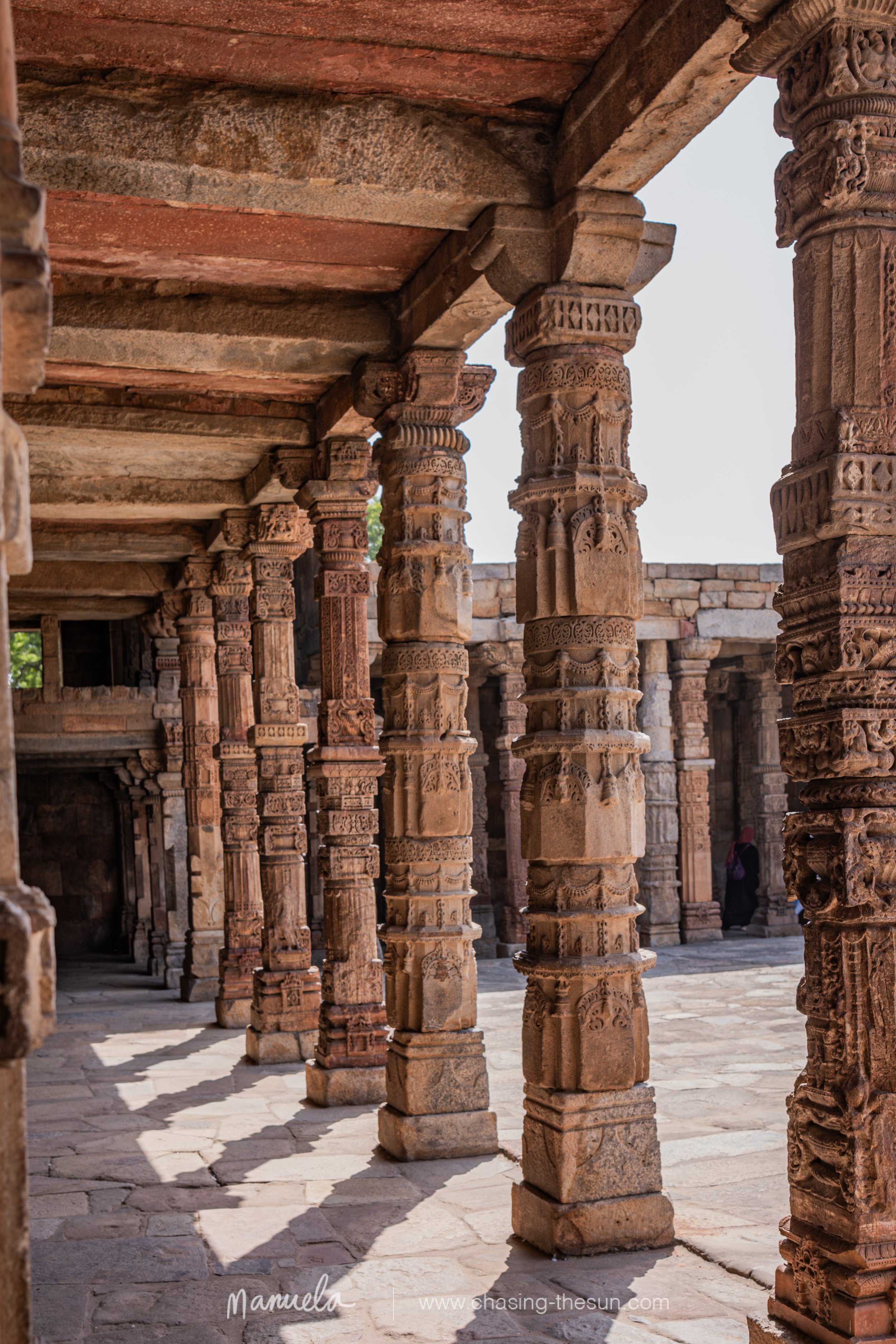
What to do?
1. Visit Old Delhi
Old Delhi, also known as Shahjahanabad, is a historic area located in the northern part of Delhi. It was founded as the capital of the Mughal Empire by Emperor Shah Jahan in the 17th century. The construction of Old Delhi began in 1638 and was completed in 1648.
The area is famous for its narrow streets, bustling markets, magnificent Mughal-era architecture, and significant historical landmarks. Some of the notable attractions in Old Delhi include:
Red Fort (Lal Qila): Built by Emperor Shah Jahan, this UNESCO World Heritage Site served as the main residence of Mughal emperors for centuries. Its red sandstone walls and impressive architecture make it a symbol of India's rich history.
Jama Masjid: One of the largest mosques in India, Jama Masjid was also commissioned by Shah Jahan. It features stunning marble domes, minarets, and a vast courtyard capable of accommodating thousands of worshippers.
Chandni Chowk: A vibrant and bustling market area with narrow lanes offering a wide variety of goods, including spices, textiles, jewelry, and street food. It's a cultural hub where one can experience the local lifestyle and culinary delights.
Spice Market (Khari Baoli): Asia's largest wholesale spice market is located in Old Delhi. It's a sensory delight with aromatic spices, herbs, nuts, and dried fruits stacked in shops lining the streets.
Gurdwara Sis Ganj Sahib: A prominent Sikh temple associated with the martyrdom of Guru Tegh Bahadur, the ninth Sikh Guru. It holds historical significance for Sikhs and attracts devotees and visitors alike.
2. India Gate
India Gate is an iconic national monument located in the heart of Delhi. It stands as a symbol of pride and sacrifice, commemorating the Indian soldiers who lost their lives during World War I and the Afghan Wars. The monument holds great historical and cultural significance for the country.
Here are key details and information about India Gate:
History: Designed by Sir Edwin Lutyens, India Gate was originally known as the All India War Memorial. Its construction began in 1921 and was completed in 1931. The monument was dedicated to the 70,000 soldiers of the British Indian Army who died in the First World War between 1914 and 1921, as well as those who fell during the Third Anglo-Afghan War in 1919.
Architecture: India Gate is a magnificent arch-shaped structure made of sandstone and granite. Rising to a height of 42 meters, it bears resemblance to the Arc de Triomphe in Paris. The arch is adorned with intricate designs and inscriptions of the names of soldiers who made the ultimate sacrifice.
Eternal Flame and Amar Jawan Jyoti: At the base of India Gate lies the Amar Jawan Jyoti (the flame of the immortal soldier), which is a perpetual flame that burns day and night as a tribute to the Indian soldiers who sacrificed their lives in various conflicts since India's independence.
4. Significance: India Gate has become an important landmark and a symbol of national pride. It serves as a site for various national events, parades, and commemorations, especially on Republic Day (26th January) when the Republic Day Parade starts from Rashtrapati Bhavan (Presidential Residence) and moves towards India Gate.
5. Surroundings: The monument is surrounded by lush lawns and well-maintained gardens, making it a popular spot for locals and tourists alike. People visit to pay homage to the soldiers, relax in the gardens, or enjoy evening strolls around the area.
India Gate stands not only as a memorial but also as a symbol of India's unity, valor, and the sacrifices made by the brave soldiers in serving the nation.
The Red Fort, a UNESCO World Heritage Site in Delhi, is an architectural marvel that stands as a symbol of India's rich history and Mughal heritage. Built by Emperor Shah Jahan in the 17th century, its impressive red sandstone walls encompass a sprawling complex housing various halls, pavilions, and gardens. This iconic monument served as the main residence of Mughal emperors for centuries and remains a prominent landmark, attracting visitors from around the world with its intricate carvings, stunning architecture, and historical significance.
Today, the Red Fort stands as a popular tourist destination where visitors can immerse themselves in the grandeur of Mughal architecture. The Diwan-i-Aam and Diwan-i-Khas, alongside the beautiful Moti Masjid and lush gardens, offer glimpses into the opulent lifestyle and administrative prowess of the Mughal Empire, making it a must-visit site for anyone exploring the historical richness of Delhi.
3. Visit the Red Fort
4. Gurudwara Bangla Sahib
Gurudwara Bangla Sahib is one of the most prominent Sikh gurdwaras in Delhi. It holds immense religious significance for Sikhs and serves as a center for spiritual solace, community service, and devotion. The gurdwara is dedicated to Guru Har Krishan, the eighth Sikh Guru, who stayed at the bungalow (Bangla) that once stood on the site during the 17th century.
This serene and magnificent gurdwara features a large sarovar (holy pond) within its premises, offering a tranquil ambiance for devotees and visitors. One of its distinguishing features is the iconic golden dome that stands tall against the Delhi skyline. Gurudwara Bangla Sahib is renowned for its community kitchen (langar), where volunteers selflessly prepare and serve free meals to thousands of people from diverse backgrounds every day, reflecting the Sikh principle of seva (selfless service). Visitors can partake in the langar as a way to experience the spirit of equality and unity promoted within Sikhism. The gurdwara also houses a museum that showcases Sikh history, teachings, and artifacts, providing insights into the religion's profound legacy. Gurudwara Bangla Sahib stands not only as a place of worship but also as a symbol of compassion, inclusivity, and the Sikh values of service and devotion.
5. Agrasen Ki Baoli
Agrasen Ki Baoli, an ancient stepwell nestled amidst the bustling streets of Delhi, stands as a silent witness to centuries of history and architectural prowess.
Believed to have been built during the Mahabharata era by the legendary king Agrasen, though the exact date of construction remains uncertain, this architectural marvel carries an air of mystery and fascination. The Baoli, or stepwell, represents a traditional Indian water storage system and was a vital source of water for the surrounding community during ancient times. Its significance extends beyond functionality, as stepwells were also social spaces for congregating, reflecting the seamless integration of architectural excellence and communal utility in ancient Indian society.
The architectural layout of Agrasen Ki Baoli is strikingly captivating a series of steps descending into the depths of the earth, leading to the water reservoir below. The Baoli's symmetrical and intricately designed steps create a visually stunning spectacle, capturing the attention of visitors, history aficionados, and artists alike. The remarkable precision and craftsmanship in its construction stand as a testament to the ingenuity of ancient engineering, providing a sense of awe and admiration for the artisans who crafted this marvel.
Despite its historical and architectural significance, Agrasen Ki Baoli holds a certain mystical allure, perpetuated by stories and folklore that surround its existence. Legends hint at the Baoli being haunted, fostering an intriguing aura that draws both curious visitors and spiritual seekers. The serenity within the Baoli's precincts, contrasting with the urban chaos outside, invites contemplation and reflection. This site, which once served as a pragmatic solution for water storage, has evolved into a symbol of architectural brilliance, historical heritage, and cultural intrigue, making it an indispensable stop for those delving into Delhi's multifaceted past and its architectural treasures.
6. Qutb Minar Complex
The Qutb Minar Complex, situated in Delhi, is a UNESCO World Heritage Site and holds immense historical, architectural, and cultural significance. The complex is named after the Qutbuddin Bakhtiar Kaki, a Sufi saint whose shrine is located within its premises. At the heart of the complex stands the magnificent Qutb Minar, a towering minaret that serves as a symbol of India's rich heritage.
The main attraction, the Qutb Minar, is a UNESCO-listed 73-meter (239 feet) high tower built by Qutbuddin Aibak, the first Sultan of Delhi, in the 12th century. It is an exemplary masterpiece of Indo-Islamic architecture, characterized by intricate carvings, verses from the Quran, and exquisite geometric patterns on its sandstone walls. The minaret served as a call to prayer and a vantage point, offering breathtaking views of the surrounding landscape.
Within the complex, visitors can explore various other historical structures such as the Quwwat-ul-Islam Mosque, which is one of the oldest mosques in India. The mosque showcases striking architecture with columns and pillars reused from demolished Hindu temples, displaying a fusion of Hindu and Islamic architectural styles. The Iron Pillar of Delhi, standing tall within the mosque, is an engineering marvel known for its rust-resistant composition and exceptional metallurgical quality.
Other notable structures in the Qutb Minar Complex include the Alai Darwaza, a majestic gateway adorned with intricate designs, and the Tomb of Iltutmish, the second Sultan of Delhi. The entire complex, surrounded by well-maintained gardens and ruins of ancient structures, offers a captivating glimpse into India's diverse historical past, architectural evolution, and the fusion of various cultural influences that have shaped the country over centuries. The Qutb Minar Complex stands not only as a testament to medieval India's architectural prowess but also as a cherished heritage site that attracts visitors and historians from around the world.
7. Humayun Tomb
The Humayun's Tomb, is an architectural gem and a UNESCO World Heritage Site that holds significant historical importance. Constructed in the 16th century, this magnificent mausoleum stands as a testament to the grandeur of Mughal architecture and is a precursor to the Taj Mahal, showcasing a unique blend of Persian and Indian architectural styles.
Commissioned by Empress Bega Begum, the grieving widow of Emperor Humayun, the tomb was designed by Persian architect Mirak Mirza Ghiyas. It represents a departure from earlier architectural styles in India and marks the beginning of the Mughal architectural renaissance.
The grandeur of Humayun's Tomb lies in its symmetrical design, with its central dome, intricate lattice screens, arched alcoves, and serene charbagh (Mughal-style garden) surrounding the tomb. The use of red sandstone and white marble, along with detailed geometric patterns and calligraphic inscriptions from the Quran, adds to its breathtaking beauty.
The mausoleum's architectural features, including the use of double domes and innovative construction techniques, made it a significant landmark in the evolution of Mughal architecture. Furthermore, the tomb complex houses the tombs of various other members of the royal family, contributing to its historical and cultural richness.
The serene ambiance of the charbagh garden, divided into four quadrants by water channels and pathways, provides a peaceful retreat for visitors amid the bustling city. Humayun's Tomb stands as a poignant symbol of love, architectural brilliance, and cultural heritage, attracting tourists, history enthusiasts, and admirers of exquisite craftsmanship from around the world. Its historical significance and architectural beauty make it a must-visit destination for those exploring Delhi's rich cultural tapestry and Mughal legacy.























